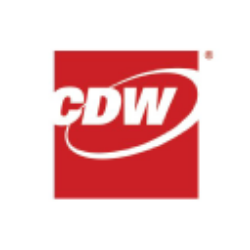The Estée Lauder Companies Inc.: Bullish vs. Bearish Analysis
Investor sentiment around The Estée Lauder Companies Inc. (NYSE: EL) reflects a classic tug-of-war between optimism about its luxury brand portfolio and skepticism about near-term macroeconomic headwinds. Below, we dissect the bullish and bearish arguments, integrating key technical patterns, investor psychology, and fundamental drivers.
🐂 Bulls Say: The Case for Long-Term Growth
1. Premium Brand Dominance in a Resilient Market
Estée Lauder operates in the global prestige beauty market, which historically grows at a mid-single-digit CAGR. Bulls argue that EL’s portfolio of 25+ luxury brands (including MAC, La Mer, and Tom Ford Beauty) positions it to outpace market growth by 1–2 percentage points annually.
- Bullish Catalyst: The company’s Profit Recovery and Growth Plan (PRGP) aims to rebuild margins and drive organic sales growth. For FY2023, EL projects 9–12% organic net sales growth, excluding acquisitions.
- Investor Psychology: Luxury beauty is perceived as "recession-resistant" due to its aspirational appeal. EL’s loyal customer base and pricing power mirror the bullish harami pattern—a technical indicator signaling potential reversal after a downtrend.
2. Asia Travel Retail Recovery
While temporary COVID-19 restrictions in China hurt Q3 2022 sales (-3% organic growth), bulls expect a bullish reversal as travel rebounds.
- Data Point: Asia-Pacific contributes ~30% of EL’s revenue. Post-pandemic, Chinese consumers are projected to drive 50% of global luxury growth by 2025.
- Bullish Flag Pattern: EL’s stock could mirror this pattern—a consolidation phase before upward momentum resumes.
3. Innovation & Strategic Acquisitions
EL’s acquisition of DECIEM (owner of The Ordinary) adds $0.03 EPS accretion in FY2023. Bulls highlight:
- Skincare Growth: Skincare now represents 45% of sales, growing at 2x the rate of makeup.
- Product Launches: Successful innovations like Advanced Night Repair Serum and Tom Ford’s Private Blend fragrances reinforce brand desirability.
🐻 Bears Say: Near-Term Risks Loom Large
1. China Dependency and Inventory Volatility
Bears warn that EL’s reliance on China (20% of sales) exposes it to:
- Bearish Hammer Candlestick: A potential breakdown if lockdowns recur.
- Channel Inventory Risks: Retailers in Asia travel retail tightened inventories in 2022, leading to a $0.04 EPS drag.
2. Margin Pressure from Inflation
EL’s gross margin fell 180 bps in FY2022 due to:
- Supply Chain Costs: Freight and raw material inflation.
- Promotional Activity: Elevated discounts to clear excess inventory.
- Bearish RSI Divergence: Rising costs vs. slowing sales growth could signal weakening momentum.
3. Valuation Concerns
EL trades at a premium to peers:
| Metric | EL (FY2023) | Industry Avg. |
|---|---|---|
| P/E Ratio | 34.5x | 22.0x |
| Price/Sales | 4.8x | 3.1x |
| Bears argue this leaves little room for error. |
🔑 Key Catalysts to Watch
1. Global Round-Up: Bullish or Bearish?
- Bullish Scenario: China’s reopening accelerates, driving H2 2023 sales growth.
- Bearish Scenario: Inflation persists, forcing EL to cut FY2023 EPS guidance below $7.23–$7.38.
2. Technical Patterns
- Bullish Harami Pattern: A close above $240 could signal upward momentum.
- Bearish Hammer Candlestick: A drop below $200 may indicate further downside.
3. Investor Psychology
- FOMO (Fear of Missing Out): EL’s status as a "blue-chip beauty stock" could attract buyers during dips.
- Herd Mentality: Negative headlines about China may trigger panic selling.
🎯 Conclusion: Balanced Risk-Reward
Estée Lauder’s bullish and bearish dynamics reflect its position as a high-quality company navigating short-term turbulence. While its brand equity and innovation pipeline justify a premium valuation, investors must weigh:
- Bullish Drivers: Prestige beauty resilience, Asia recovery, and margin expansion.
- Bearish Risks: China volatility, inflationary pressures, and rich valuations.
Institutional investors are likely to adopt a barbell strategy—holding EL for long-term growth while hedging near-term risks via options (e.g., protective puts). Retail investors should watch for bullish reversal patterns and quarterly guidance updates.
Bottom Line: EL is a bullish flag pattern in progress—consolidating today for potential gains tomorrow, but only if macro winds align.


















